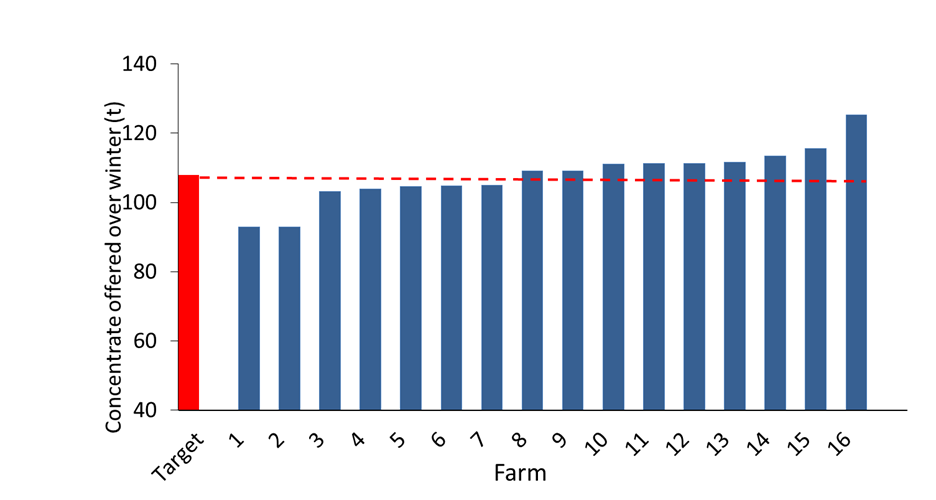The issue appears to be widespread, with feeders on all of the 16 farms sampled showing some degree of inaccuracy.
Taking a 100-cow herd offering an average of 6kg concentrate/cow/day through in-parlour feeders over a 180-day winter period as an example, the total target concentrate usage is 108t over the winter. However, based on the feeder inaccuracies observed in the study, the most extreme underfeeding farm would actually feed only 93t concentrate. In contrast, on the most extreme overfeeding farm, feeders would actually feed 125t concentrate, representing underfeeding and overfeeding of 15t and 17t, respectively. The study is part of a larger project co-funded by the Department of Agriculture, Environment and Rural Affairs Research Challenge Fund) and AgriSearch, examining the effect of feed-to-yield systems on milk production, milk composition and economic performance. AFBI will release the full results from this larger study in the autumn.Methodology
The test involved a pre-programmed quantity of concentrates (generally between 0.5–2.0 kg, depending on the feeder calibration setting) to be dropped from each feeder into a plastic bucket, which was then weighed. The difference between the actual weight of concentrate dropped from the feeder, and the target weight that should have been dropped (per cent deviation from target), was then calculated. The information on the actual amount of concentrate dropped was then used to recalibrate the weigh-cell in each feeder using the inbuilt computer software.Results
The graph below shows the average deviation from the target of all feeders tested on each of the 16 farms.
In the most extreme cases, the feeders dropped approximately 13–14% less concentrate than planned, while on Farm 16, on average, the feeders dropped 15% more concentrate than planned.
On most of the remaining farms, the average error across all feeders was plus or minus 5%, which most producers would consider to be acceptable. However, even on these ‘better’ farms, the average values ‘hide’ problems with individual feeder variations. For example, on Farm 11, one feeder was overfeeding by 100%; therefore, dropping double the ration planned. Meanwhile, on Farm 4, one feeder was underfeeding by 70% (and therefore, only dropping 0.3kg instead of 1kg with each feeding).The implications of feeder inaccuracy
The impact that these inaccuracies can have on the volume of concentrates offered on a farm can be considerable. The graph below shows the impact of inaccurate feeders on the total quantity of concentrates that would be fed over a 180-day winter period (100 cows at 6kg/cow/day).
Your feeder supplier should be able to advise you on how to calibrate your feeding system, but in general, a simple weigh-scale, plastic bucket and some of your time is all that is required."However, this is likely to be time well spent, especially if you wish to bring more accuracy and precision into your feeding systems and increase profit."

